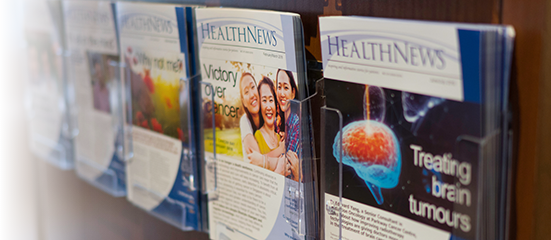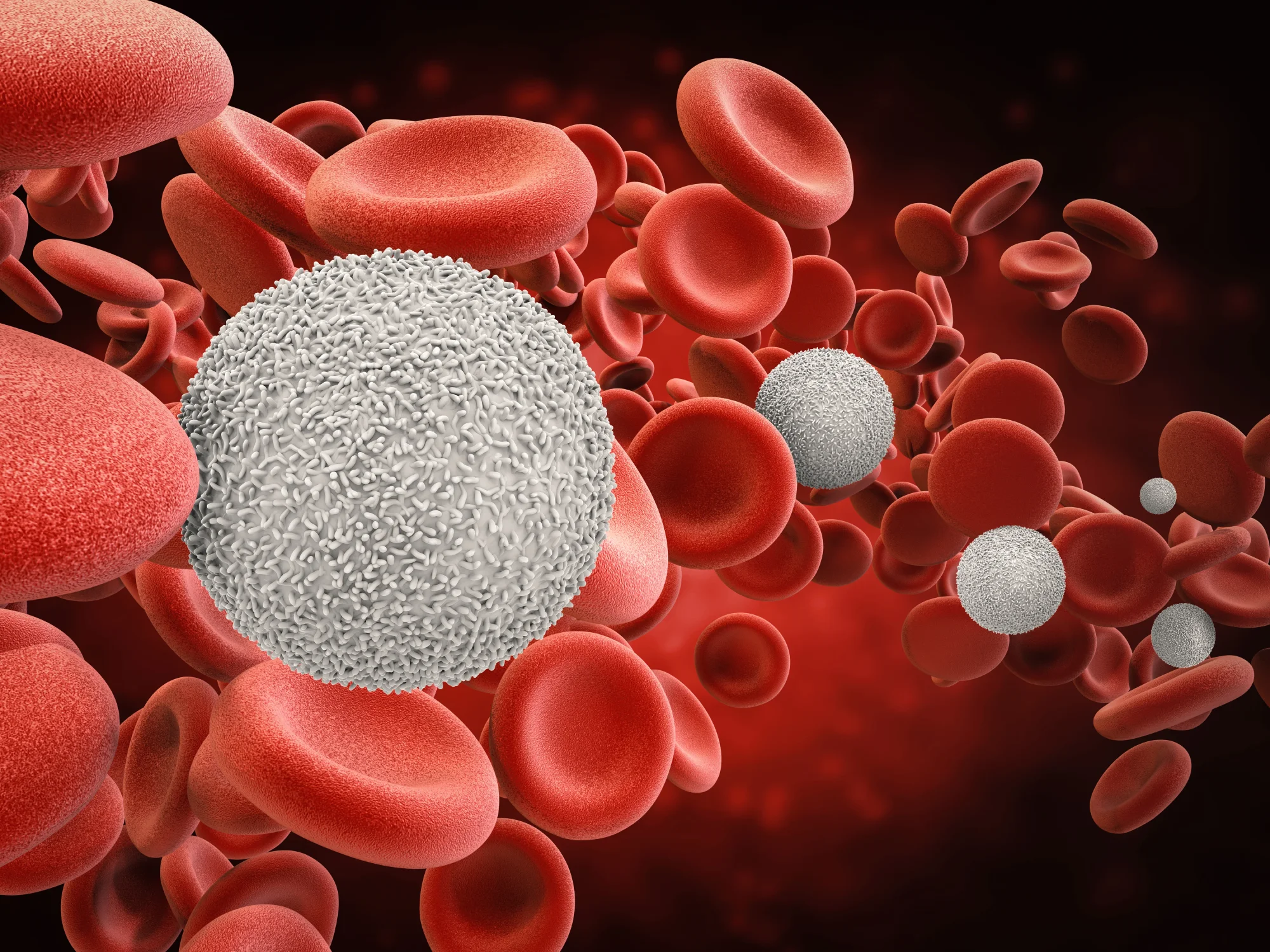Transplanting blood stem cells
Dr Colin Phipps Diong, Parkway Cancer Centre’s new consultant specialising in lymphoma and blood cancers, and haematopoietic stem cell transplantation, explains haematopoietic stem cell transplantation.
What is haematopoietic (bone marrow) transplantation?
The term haematopoietic stem cell (HSC) refers to cells made in the blood factory or bone marrow that have the potential to grow into almost any type of blood cell. Transplantation
of HSC (HSCT) is done in order to re-establish bone marrow and immune system function after being damaged and/or attacked by blood cancer. The first adult HSCT in Singapore was performed in July 1985 on a patient with relapsed acute
leukaemia. Before the HSC infusion, the patient received radiation to his entire body with certain vital organs shielded. The treatment that immediately precedes infusion of HSC is called conditioning
therapy and is given to help kill tumour cells, “wipe out the memory” of the recipient’s immune system, and create “space” within the bone marrow for the incoming stem cells to grow. In the case of transplants using HSC derived
from other people, the conditioning therapy also helps reduce the risk of the recipient’s body killing or rejecting the incoming donor stem cells (graft rejection).
Who is it for?
The most common indications for HSCT are blood cancers, mainly acute leukaemias, cancers of the lymphatic tissues (lymphomas) and the antibody-forming blood cells (
multiple myeloma). Other indications include bone marrow failures, autoimmune diseases and neurological conditions like multiple sclerosis that have failed standard treatments.
What are the types of HSCT?
HSCT can be broadly divided into autologous transplantation, where patients use their own blood stem cells, and allogeneic transplantation, where stem cells are obtained from a different person. The rationale
underlying autologous transplantation is to deliver high doses of chemotherapy (with or without radiotherapy). The reinfusion of the patient’s own stem cells acts to rescue the bone marrow from toxicity. Stem cells are collected (harvested) before
conditioning therapy starts and are usually frozen until it is time for use. Whereas anti-tumour effects rely solely on high-doses of chemotherapy in autologous transplants, allogeneic HSC may also have beneficial immune activity that kills tumour/leukaemia.
How are haematopoietic stem cells obtained for transplant?
There are two ways to obtain HSC. The more common way is to collect them from the blood stream, or “peripheral blood stem cell harvesting”. In this procedure,
blood is drawn from one arm which then goes through a machine that filters out stem cells and white blood cells. The remaining blood is returned in the other arm to form a “circuit”. The second way is to extract HSC directly from large bones,
usually the pelvis and usually under general anaesthesia. This is called bone marrow harvesting and is much less commonly performed nowadays. Another type of HSC source is cord blood cells that are used in umbilical cord blood transplants. This is collected
from a baby’s umbilical cord immediately following birth before the placenta is delivered. These cells are then frozen for later use. Cord blood collection does not carry any risk or pain to the mother or child whether it is done after vaginal or
caesarean deliveries.
Who is a compatible donor?
Matching of the HLA system type is the most important way to determine whether the patient’s and donor’s immune system are compatible. Accurate determination of immune system compatibility is
vital to minimise graft failure and lethal attack from donor cells against recipient’s normal tissues (graft-versus-host disease or GvHD). The best donor is a full “10/10” -matched sibling donor followed by a fully-matched unrelated
donor (URD). The chance of a sibling of same parentage as the recipient being fully matched is 25 per cent. For patients who are unable to find a suitably-matched sibling or unrelated donor, umbilical cord blood that is available as an “off the
shelf” source of frozen HSC can be used.
What is the transplant procedure?
Patients will need an adequate fitness level to be ready for the procedure. In the case of allogeneic transplant, the patient’s donor will also have to undergo an assessment. Patients are given
various medications to help reduce the risk of bacterial, viral, and fungal infection when they undergo conditioning therapy. After conditioning therapy, stem cells are infused into the bloodstream (usually between 30 and 60 minutes), akin to a blood
transfusion procedure. In allogeneic transplantation, patients will also be given medication to reduce the chance of graft rejection and GvHD. After infusion, HSC will home in on the bone marrow and start growing. This usually takes about 10 to 14 days
for peripheral blood stem cell transplants.
What are the outcomes?
Outcomes of HSCT have improved over the years. Major barriers to long-term survival that remain include late-onset GvHD and disease relapse. To this end, strategies to manipulate stem cells in order to shift
the balance in favour of tumour-killing as well as the engineering of immune cells that preferentially kill blood cancer cells have been developed and are slowly becoming more mainstream.
Side effects and complications
Side effects and complications can happen with any type of treatment and every patient may experience them differently. For
stem cell transplant patients, side effects can happen after the procedure or as a result of the conditioning treatment itself. Here are some possible side effects:
- Infections
- Bleeding
- Low blood count
- Nausea and vomiting
- Diarrhoea
- Loss of appetite
- Sores in the mouth leading to pain on swallowing
- Nerve and muscle problems
- Graft rejection
- Graft-versus-host disease or GvHD
- Infertility
- Second cancers
The above list is not exhaustive. Thorough discussion with your physician should be done before the transplant.


